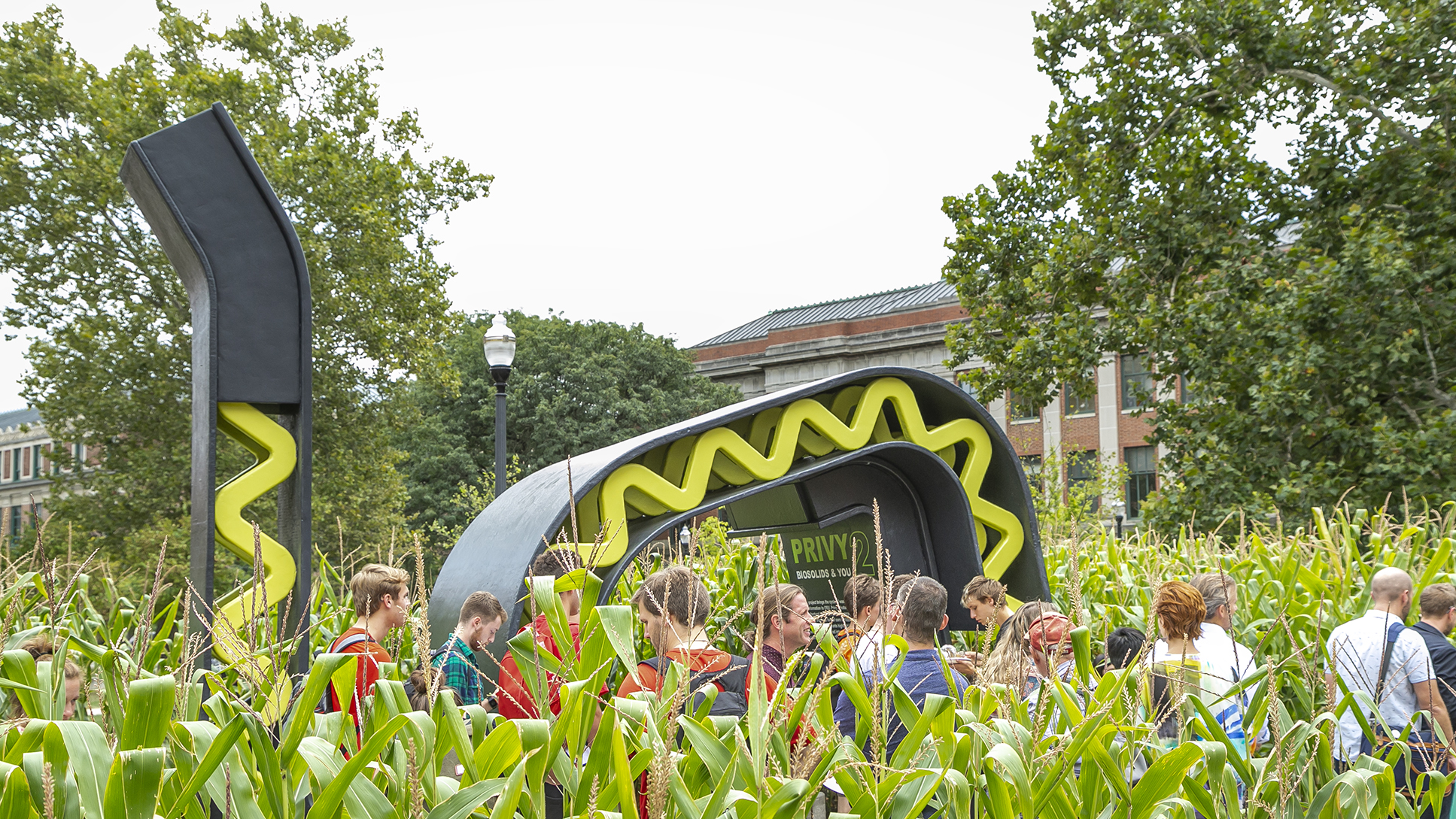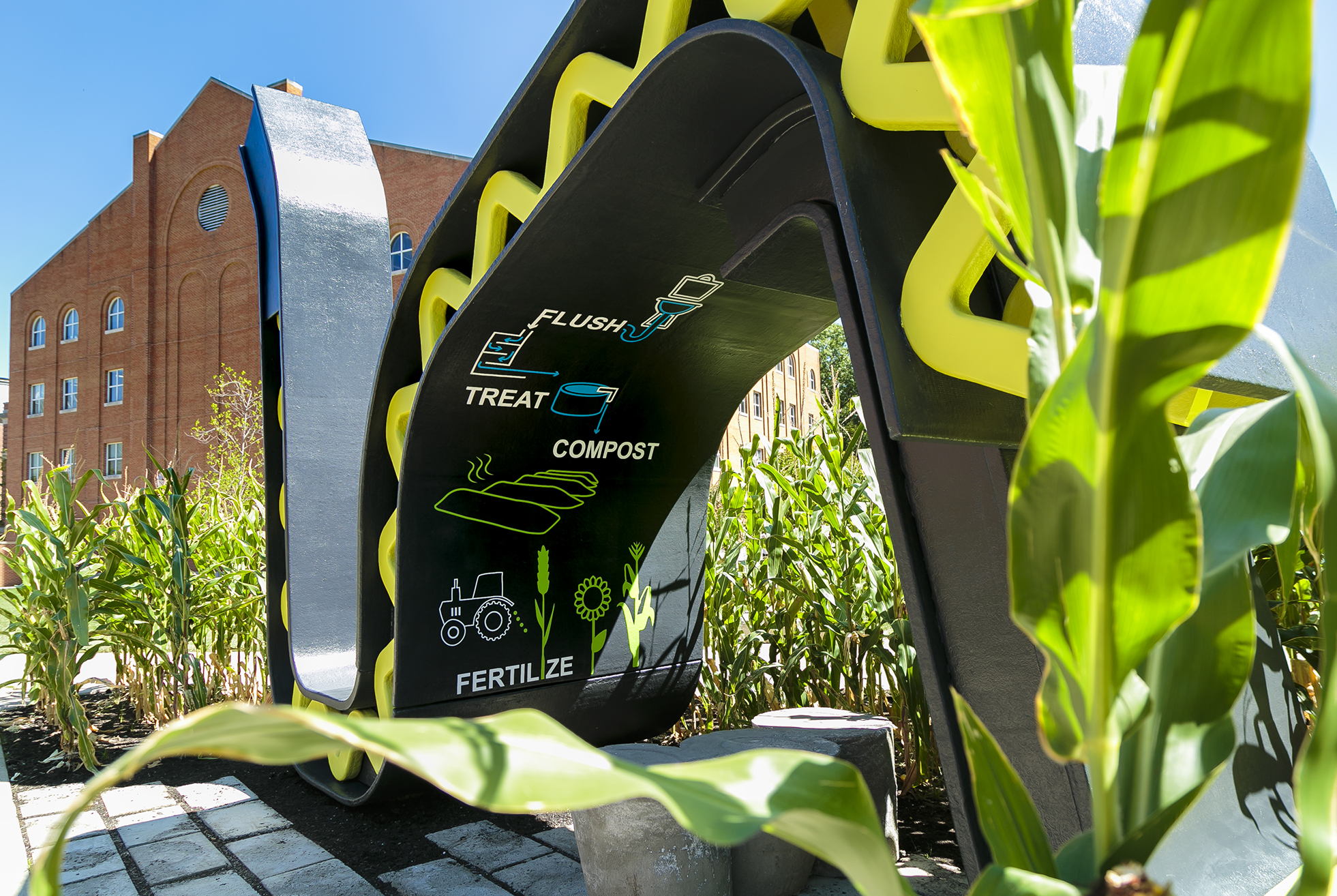![]()
Privy 2

Biosolids & You
TeamForbes Lipschitz, Justin Diles, Nick Kawa
Location
The Ohio State University
Columbus, Ohio
Date
September 1, 2019 - May 1, 2020
We rarely think about what happens when we flush the toilet. Infrastructure enables our collective blindness to the byproducts of our bodily lives. As scholar Gay Hawkins argues, the urban sewage system is a “public secret,” aided by modernist infrastructure that shields people from knowing where their “shit ends up.”1 In the United States today, urban sewage is pumped through some 740,000 miles of buried pipes to remotely sited treatment plants at the city’s edge.2 We are only reminded of the existence of this vast underground river when it inevitably fails. In cities with combined sewer systems, even modest rain events can result in raw sewage overflowing untreated into waterways. Meanwhile, as excessive nutrients from such overflow events leads to eutrophication and algal blooms in urban waterways, rural agricultural areas increasingly rely on chemical fertilizer amendments manufactured with fossil fuels.
Because modern wastewater infrastructure is hidden from public view, the ecological problems it poses remain largely unchallenged. Though design has facilitated this paradigm of infrastructural obscurity, it can also intervene to make it more visible. This research and public-outreach project aims to shed light on the processes by which human “waste” can be transformed into an agricultural resource. Led by a transdisciplinary team of faculty, students and public sector professionals, the project investigated attempts in the United States, and central Ohio specifically, to “close the loop” in nutrient cycling by turning human excreta into a viable agricultural fertilizer through the use of biosolids (treated and/or composted sanitation wastes). The team asked how visualization tools and landscape installations can make visible the complex and largely hidden process of waste transformation.
The project had two main components. The first was a zine developed collaboratively by students and faculty from Anthropology and Landscape Architecture. Infrastructural Digest: Issue #2 featured 8 short essays on “waste,” with topics ranging from the history of night soil use in China to the regulatory constraints preventing farms that apply biosolids from receiving organic certifications. The second consisted of a temporary public landscape installation constructed by the team in 2019.
The installation, titled "Privy 2: Biosolids & You," featured an architectural pavilion, made with recycled material, sited in a field of corn fertilized with biosolids from the City of Columbus. Visitors to the installation could sit on a bench (a three-seated menage-a-toilet) while taking in large format graphics that visualized nutrient cycles—from flush to fertilize. These elements highlighted how human “waste” can be transformed into agricultural and architectural resources. Rather than attempting to cover up or sanitize the smelly reality of biosolids, the garden as sensorium embraces tensions of stench and scent, disgust and pleasure. This installation was originally sited on the campus of the Ohio State University and was subsequently moved to a permanent location at the City of Columbus Water Treatment Plant.





